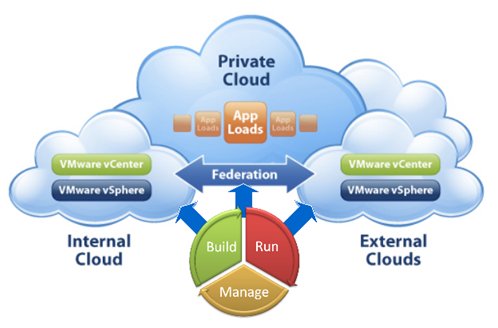VMware announced on August 10, 2009 its willingness to acquire SpringSource for $362 million in cash and equity, plus $58 million of unvested stock and options (press release). The process should be closed in Q3 2009.
How can this acquisition be interpreted? What are the goals of VMware/SpringSource?
Some interesting inputs and analysis found on Internet.
About the merge itself
[…] We have signed a definitive agreement with VMware, who will acquire SpringSource. Subject to regulatory approval, we expect the transaction to close in Q3. SpringSource will become a division within VMware. I will continue to lead SpringSource, reporting to VMware CEO Paul Maritz.
About the opportunity
[…] But the broader transformation in IT goes beyond Java frameworks, tooling and runtime infrastructure. The way in which people think about software stacks is changing. Virtualization is reshaping the data center, and cloud computing is set to drive far-reaching changes. Significantly, cloud computing blurs the division between development and operations, bringing new power (and responsibility) to developer.
And so the question becomes, what is the most simple, powerful, pragmatic way of utilizing SpringSource technologies in the data center, and in the cloud?
About the vision
Working together with VMware we plan on creating a single, integrated, build-run-manage solution for the data center, private clouds, and public clouds. A solution that exploits knowledge of the application structure, and collaboration with middleware and management components, to ensure optimal efficiency and resiliency of the supporting virtual environment at deployment time and during runtime. A solution that will deliver a Platform as a Service (Paas) […]
About the vision (said in other words)
The next chapter of our work at SpringSource is tackling those challenges: Building on our Build/Run/Manage solution to provide the industry’s best solution from developer desktop to cloud deployment. Bringing Spring’s power and simplicity to enabling the millions of Java developers to benefit from the full power of cloud computing. […]
About the representation of this vision

About the open source community
Our commitment to open source practices, licenses and traditions will remain unchanged. We expect our contributions to open source to increase. Our open source projects will retain their commitment to enabling user choice. Spring will retain the portability between deployment environments that empowers users. […]
Part I
[…] VMware is clearly in need of a story beyond virtualization, even if we are still relatively early on in enterprise adoption. Still, looking into the future, it sees clear skies, and that does not fit with the multi-billion dollar opportunity shaping up in cloud computing. Thus, VMware is willing to invest a significant amount in SpringSource, which does represent a crossover in customers without much, if any, crossover in competition.
Part II
VMware is working to address its increasing competition from all sides. While it may seem somewhat odd for VMware to want to get involved in enterprise Java application development and deployment, it may want to take advantage of SpringSource’s relatively quick climb in the enterprise Java development and support business. VMware may also be looking to offset any gain in enterprise Java influence and control by Oracle, which may do so with its more than $7 billion acquisition of Sun Microsystems.
Part III
VMware is also facing increasing competition from OS vendors, including Microsoft, Novell and Red Hat, which is among SpringSource’s biggest competitors with its JBoss business. Again, SpringSource may not seem the most likely suitor for Java application development, but VMware may see this as an area where it can most effectively integrate its own technology and talent to differentiate in virtualization and cloud computing.[…]
Open source?
Although SpringSource’s open source nature has been critical to its developer reach and success, this is likely not as important to VMware, which may view SpringSource more as a subscription software company than as an open source software company. Either way, it seems VMware, similar to Oracle, may have somewhat limited vision when it comes to open source software, seeing it for its development and time-to-market advantages, but missing other community benefits — including user and customer communities, feedback and contributions — that help make things work.[…]
Disclosure: Innoveo Solutions is using Spring in its Innoveo Skye™ software product.
cross-posted on the Innoveo blog.




